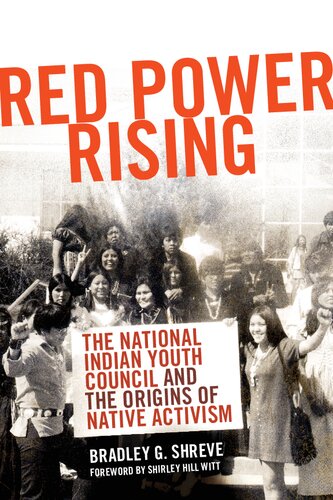

Most ebook files are in PDF format, so you can easily read them using various software such as Foxit Reader or directly on the Google Chrome browser.
Some ebook files are released by publishers in other formats such as .awz, .mobi, .epub, .fb2, etc. You may need to install specific software to read these formats on mobile/PC, such as Calibre.
Please read the tutorial at this link: https://ebookbell.com/faq
We offer FREE conversion to the popular formats you request; however, this may take some time. Therefore, right after payment, please email us, and we will try to provide the service as quickly as possible.
For some exceptional file formats or broken links (if any), please refrain from opening any disputes. Instead, email us first, and we will try to assist within a maximum of 6 hours.
EbookBell Team

0.0
0 reviewsDuring the 1960s, American Indian youth were swept up in a movement called Red Power—a civil rights struggle fueled by intertribal activism. While some define the movement as militant and others see it as peaceful, there is one common assumption about its history: Red Power began with the Indian takeover of Alcatraz in 1969. Or did it?
In this groundbreaking book, Bradley G. Shreve sets the record straight by tracing the origins of Red Power further back in time: to the student activism of the National Indian Youth Council (NIYC), founded in Gallup, New Mexico, in 1961. Unlike other 1960s and ’70s activist groups that challenged the fundamental beliefs of their predecessors, the students who established the NIYC were determined to uphold the cultures and ideals of their elders, building on a tradition of pan-Indian organization dating back to the early twentieth century. Their cornerstone principles of tribal sovereignty, self determination, treaty rights, and cultural preservation helped ensure their survival, for in contrast to other activist groups that came and went, the NIYC is still in operation today. But Shreve also shows that the NIYC was very much a product of 1960s idealistic ferment and its leaders learned tactics from other contemporary leftist movements.
By uncovering the origins of Red Power, Shreve writes an important new chapter in the history of American Indian activism. And by revealing the ideology and accomplishments of the NIYC, he ties the Red Power Movement to the larger struggle for human rights that continues to this day both in the United States and across the globe.